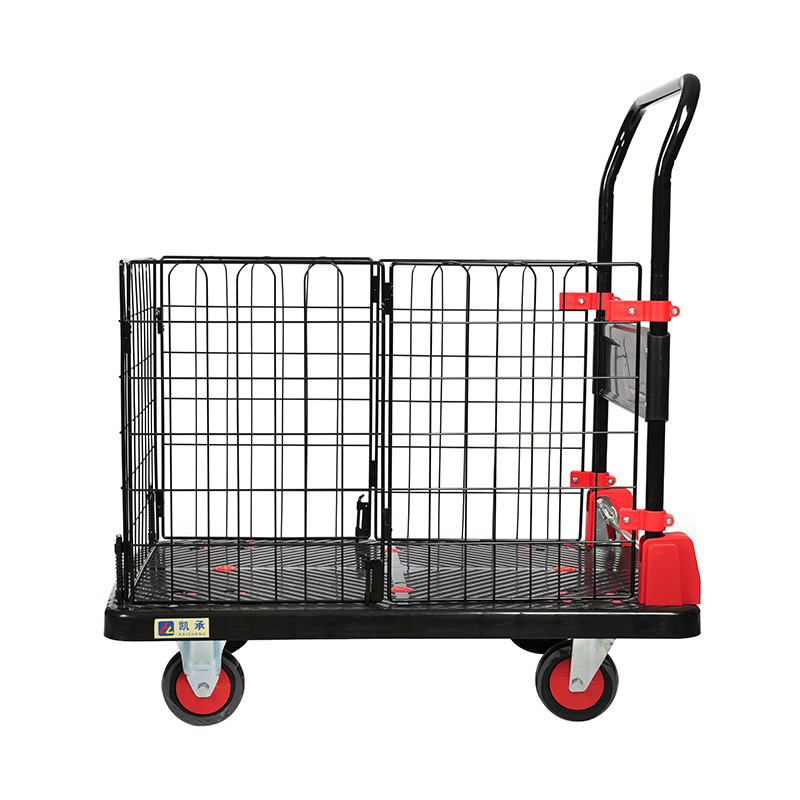When designing and manufacturing a Metal Fence Logistics Transport Vehicle, balancing load-bearing capacity and vehicle weight is a key challenge. Load-bearing capacity determines the amount of cargo that a vehicle can transport, while vehicle weight directly affects fuel efficiency, operational flexibility, and overall transportation costs. The following are specific methods and strategies to achieve this balance:
1. Material selection
(1) High-strength lightweight materials
Principle: Using high-strength, low-density materials can reduce vehicle weight while maintaining sufficient load-bearing capacity.
Implementation:
Aluminum alloy: Compared with traditional steel, aluminum alloy has a higher strength-to-weight ratio, which can significantly reduce vehicle weight while also having good corrosion resistance.
High-strength steel: Such as dual-phase steel (Dual-Phase Steel) or ultra-high-strength steel (UHSS), which can provide higher structural strength while reducing material thickness.
Composites: Such as carbon fiber reinforced composites (CFRP) or glass fiber composites (GFRP), suitable for non-load-bearing parts (such as vehicle side panels or roofs), further reducing weight.
(2) Wear-resistant materials
Principle: Metal fences may cause wear to the carriage, so wear-resistant materials are needed to extend the service life.
Implementation:
Use wear-resistant steel plates or apply wear-resistant coatings (such as polyurethane coatings) on the inner surface of the carriage floor and side walls.
Use local reinforcement treatment for high wear areas (such as contact points of fixings).
2. Structural optimization
(1) Modular design
Principle: Through modular design, the carriage structure can be flexibly adjusted to adapt to metal fences of different specifications while reducing unnecessary material use.
Implementation:
The carriage is divided into multiple detachable modules (such as side panels, floor panels and fixing brackets) and assembled or replaced according to actual needs.
Use standardized interfaces and connectors to facilitate maintenance and upgrades.
(2) Optimize force distribution
Principle: Optimize the carriage structure through finite element analysis (FEA) to ensure uniform stress distribution and avoid deformation or fracture caused by local overload.
Implementation:
Simulate the weight distribution of the metal fence during the design stage and adjust the position and number of reinforcement ribs.
Increase the rigidity of key parts (such as the connection between the chassis and the car body) to reduce vibration and deformation.
(3) Lightweight frame
Principle: The use of truss or honeycomb frame structure can reduce weight while maintaining a high load-bearing capacity.
Implementation:
Using hollow steel tubes or honeycomb aluminum in the chassis and car body frame can reduce weight and increase strength.
Optimize the welding process of the frame nodes to ensure the integrity and stability of the structure.
3. Power system and suspension system
(1) Efficient power system
Principle: Selecting an efficient power system can compensate for the increase in fuel consumption caused by the increase in vehicle body weight.
Implementation:
Using turbocharging technology or hybrid power system of diesel engine to improve fuel economy.
Optimize the battery design of new energy vehicles (such as electric trucks) to ensure that the endurance meets transportation needs.
(2) Air suspension system
Principle: The air suspension system can automatically adjust the height and hardness according to the load, thereby improving the stability and load-bearing capacity of the vehicle.
Implementation:
Install an air suspension device on the rear axle to reduce the impact of road bumps on the vehicle body.
Cooperate with the electronic control unit (ECU) to monitor the vehicle status in real time and dynamically adjust the suspension parameters.
4. Loading and fixing system
(1) Intelligent loading solution
Principle: By optimizing the loading method and fixing device, the reliance on the vehicle body structure can be reduced, thereby reducing the weight of the vehicle body.
Implementation:
Design a multi-layer loading system (such as foldable brackets or sliding guides) to fully utilize the vehicle body space.
Use hydraulic clamps or automatic strapping systems to fix metal fences to reduce the support requirements for the side walls of the vehicle body.
(2) Shock absorbers and buffers
Principle: Adding shock absorbers inside the vehicle body can reduce the impact of metal fences on the vehicle body, thereby allowing the use of lighter materials.
Implementation:
Lay rubber pads or foam buffer layers on the floor of the vehicle body to absorb vibrations during transportation.
Install elastic baffles on the side walls to prevent the metal fences from directly hitting the inner walls of the vehicle body.
5. Manufacturing Process
(1) Precision Machining
Principle: High-precision machining can reduce material waste while ensuring the strength and durability of key components.
Implementation:
Use CNC machine tools to process the body frame and compartment components to ensure accurate dimensions and high consistency.
Use laser cutting or water jet cutting technology to reduce material loss.
(2) Advanced Welding Technology
Principle: Advanced welding technology can improve weld strength while reducing thermal deformation during welding.
Implementation:
Use laser welding or friction stir welding (FSW) technology to improve welding quality and efficiency.
Perform non-destructive testing (such as ultrasonic testing) on welds to ensure that their strength meets design requirements.
The above methods can significantly reduce the weight of the vehicle while ensuring the efficient carrying capacity of the transport vehicle, thereby improving fuel efficiency and overall economy.


 English
English Español
Español



